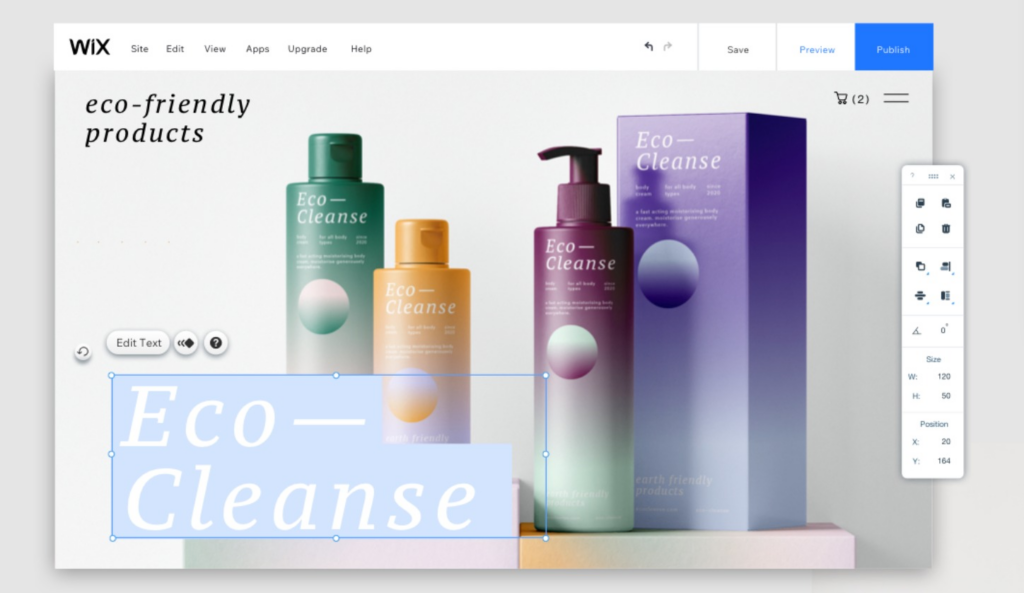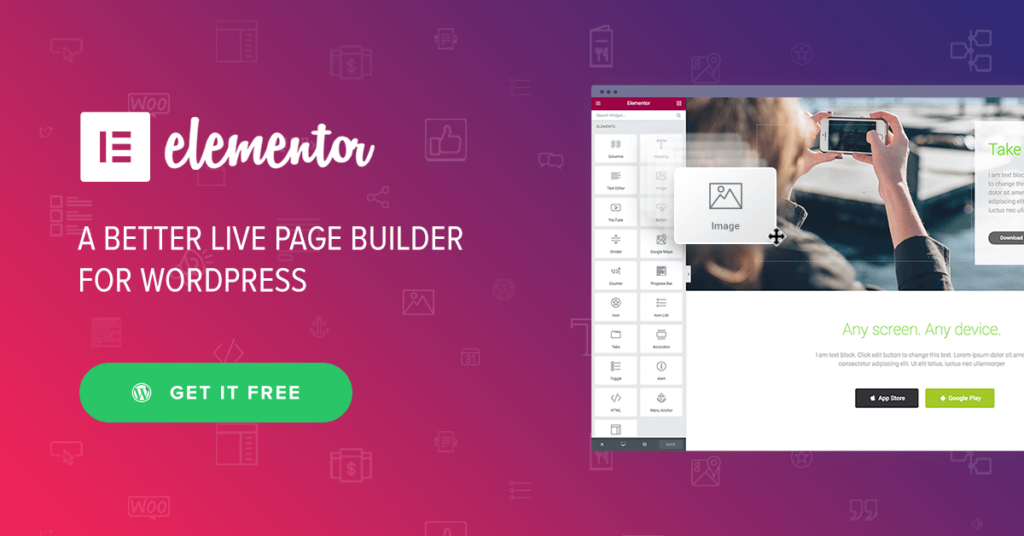Without a doubt in 2025, there has been numerous amounts of tools that has been introudced into the market that helps users build incredible websites that are seemingly perfect.
Website builders allows users to build websites without the cost or the assistance of external developers also allowing to cater to the needs and requirements of the owner.
Without a further ado, here’s the top Business Website builders in 2025.
Wix!

Without a doubt Wix is still popular in 2025, while the original idea started in 2006, Wix is still no doubt one of the strongest platforms. Similar to Squarespace and WordPress, Wix is based on drag and drop builders that allows user to easily manipulate the website to follow their needs.
Benefits
Free Hosting – The Wix website is completely free to its users and allows up to 500MB of storage which is good enough for small business websites.
App Market – The app market in Wix allows integration of many different products both free and paid. Such as payment or marketing tools without needing to learn coding.
Drawbacks
Template Lock-In: Once you choose a template and build your site, you cannot switch to a different template without starting over. This can be limiting if your needs or preferences change.
Ads on Free Plan: The free plan includes Wix branding and ads on every page, which can look unprofessional and deter visitors.
Customization Constraints: The drag-and-drop editor, while user-friendly, may restrict advanced users who want full control over code (e.g., CSS or HTML), though Wix Velo offers some advanced options.
Pricing:
Free Plan: $0, 500MB storage, 1GB bandwidth, Wix-branded domain, ads displayed.
Light Plan: $17/month, 2GB storage, no Wix ads, custom domain (free for 1 year), basic site features.
Overall : Wix is a strong choice for beginners and small businesses due to its ease of use, affordable entry-level plans, and comprehensive features. However, its limitations in flexibility, scalability, and advanced customization may frustrate users with long-term or complex needs.
SquareSpace

Squarespace remains a top contender in the website builder market in 2025. Originally launched in 2003, Squarespace has continued to evolve as a premium platform for creating visually stunning websites. Known for its sleek, professional templates and robust features, Squarespace is especially popular among creatives, small business owners, and entrepreneurs.
Benefits
- Design-First Approach: Squarespace offers beautifully designed, high-quality templates that are mobile-responsive and optimized for modern web design standards. Perfect for portfolios, blogs, and e-commerce stores.
- All-in-One Platform: With integrated hosting, domain registration, and built-in SEO tools, Squarespace eliminates the need for third-party services.
- Powerful E-commerce Features: Squarespace’s e-commerce functionality allows users to sell physical and digital products, manage inventory, and integrate payment gateways like Stripe and PayPal.
- Customer Support: 24/7 customer support via live chat and email ensures that users can resolve issues quickly.
Drawbacks
- Learning Curve: While Squarespace is user-friendly for beginners, its design flexibility and advanced features may require some initial learning to fully utilize.
- Pricing: Squarespace is more expensive compared to some competitors, with no free plan available (only a 14-day trial).
- Limited Customization: While the platform allows for some code injection, advanced users may find the customization options restrictive compared to platforms like WordPress.
Pricing
- Personal Plan: $23/month (when billed annually)
Includes a custom domain, SSL security, SEO features, and basic website analytics. - Business Plan: $33/month (billed annually)
Adds advanced website analytics, promotional pop-ups, and e-commerce capabilities (3% transaction fee). - Commerce Basic: $36/month (billed annually)
Removes transaction fees and adds tools like customer accounts, powerful analytics, and checkout on your domain. - Commerce Advanced: $65/month (billed annually)
Includes advanced e-commerce features like abandoned cart recovery, advanced shipping, and subscription selling.
Overall
Squarespace is an excellent choice for individuals and businesses that prioritize design and simplicity. Its all-in-one nature and e-commerce capabilities make it particularly appealing for creatives and small businesses. However, its higher price point and limited customization may not suit users with more complex needs or tight budgets. For those looking for an elegant, professional website without the hassle of managing multiple tools, Squarespace remains a strong contender in 2025.
WordPress

WordPress continues to dominate the website-building market in 2025, offering unparalleled flexibility and scalability. Launched in 2003, WordPress powers over 40% of the web, making it the most popular content management system (CMS) available today. It offers two versions: WordPress.org (self-hosted, open-source software) and WordPress.com (a managed hosting solution).
Benefits
- Unmatched Flexibility: WordPress.org is an open-source platform that allows you to build virtually any type of website—blogs, e-commerce, forums, portfolios, or even complex enterprise websites.
- Extensive Plugin Ecosystem: WordPress has over 60,000 plugins, allowing users to add features like SEO tools, e-commerce functionality, page builders, and more without coding.
- Theme Variety: Thousands of free and premium themes give users plenty of design options to create a unique and professional website.
- Scalability: WordPress can handle anything from small personal blogs to websites with millions of visitors.
Drawbacks
- Learning Curve: WordPress.org requires some technical knowledge to set up hosting, install themes, and manage plugins. Beginners may need time to learn the basics.
- Maintenance: With WordPress.org, users are responsible for updates, backups, and security. Neglecting these tasks can leave sites vulnerable.
- Costs Add Up: While WordPress software is free, the cost of hosting, premium themes, plugins, and developer assistance can add up over time.
Pricing
WordPress.org (Self-Hosted):
- Free software, but users must pay for hosting, which typically ranges from $5–$50/month depending on the provider and plan. Domain registration (~$10–$15/year) and optional premium themes/plugins add to the cost.
WordPress.com (Managed Hosting):
- Free Plan: $0, includes WordPress subdomain, ads, and basic features.
- Personal Plan: $4/month (billed annually), removes ads, allows custom domain.
- Premium Plan: $8/month, adds more customization, design tools, and Google Analytics.
- Business Plan: $25/month, includes advanced SEO, plugin/theme support, and 24/7 customer support.
- eCommerce Plan: $45/month, includes advanced e-commerce features like payment integration and shipping options.
Overall
WordPress remains the most powerful and versatile website builder in 2025. WordPress.org is ideal for users who want complete control over their site, offering infinite possibilities for customization and scalability. On the other hand, WordPress.com simplifies the process for users who prefer managed hosting. While there’s a learning curve and some ongoing maintenance required, the flexibility and endless features make WordPress an excellent choice for businesses, bloggers, and developers alike. It’s a solid long-term solution for websites of any size or complexity
Elementor

Elementor has cemented its place as one of the most popular website-building tools in 2025. Launched in 2016, Elementor is a drag-and-drop page builder plugin for WordPress that allows users to create visually stunning websites without needing to touch a single line of code. It combines the flexibility of WordPress with a beginner-friendly interface, making it a go-to choice for designers, developers, and small business owners.
Benefits
- Intuitive Drag-and-Drop Editor: Elementor’s live editor makes it easy to design and customize websites visually, with no coding required. Users can create layouts, add widgets, and adjust styling effortlessly.
- Extensive Template Library: Elementor offers hundreds of pre-designed templates and blocks for various industries, allowing users to get started quickly and customize their site to suit their needs.
- Advanced Design Features: From animations and motion effects to custom positioning, Elementor provides powerful tools to create professional-grade websites.
- Integration-Friendly: Elementor works seamlessly with WordPress plugins like WooCommerce, Yoast SEO, and Mailchimp, allowing for added functionality without compatibility issues.
- Free Version: Elementor offers a robust free version with essential tools for building a simple website.
Drawbacks
- Dependent on WordPress: Since Elementor is a WordPress plugin, users need to have a WordPress website to use it. This means additional steps like setting up hosting and managing WordPress itself.
- Performance Issues: Overuse of Elementor widgets and features can lead to slower load times, especially if the website isn’t optimized for performance.
- Learning Curve for Advanced Features: While the basic tools are easy to use, mastering advanced features like motion effects and custom CSS requires some effort.
Pricing
Free Plan:
- Includes the drag-and-drop editor, basic widgets, and essential templates. Ideal for simple websites.
Pro Plans (billed annually):
- Essential Plan: $59/year for 1 website. Includes all Pro templates, premium widgets, and advanced design tools like motion effects and custom CSS.
- Advanced Plan: $99/year for 3 websites. Includes everything in the Essential Plan, plus license coverage for multiple sites.
- Expert Plan: $199/year for 25 websites. Perfect for freelancers and agencies managing multiple clients.
- Agency Plan: $399/year for 1,000 websites. Includes VIP support and is tailored for large-scale operations.
Overall
Elementor is one of the best tools for users who want to build stunning, responsive websites with WordPress without needing coding skills. Its wide range of features, from templates to advanced design controls, makes it a versatile choice for beginners, freelancers, and even seasoned developers. However, its dependency on WordPress and potential performance issues mean it’s better suited for users willing to invest time and effort into optimizing their site. Whether you’re running a personal blog, an e-commerce store, or a business website, Elementor remains a powerful and user-friendly option in 2025.
Summary
In 2025, small businesses have access to several powerful website builders that cater to various needs, budgets, and skill levels:
- Wix: A beginner-friendly platform with a drag-and-drop editor, free hosting, and an app market for added functionality. Ideal for small businesses starting out, though its template lock-in and ads on the free plan are drawbacks.
- Squarespace: Known for its sleek, professional templates and all-in-one features like hosting, SEO tools, and e-commerce capabilities. Best for creatives and businesses that prioritize design, though it’s more expensive and has limited customization.
- WordPress: The most flexible and scalable option, offering unmatched plugin variety and customization. WordPress.org requires technical knowledge and maintenance, while WordPress.com simplifies the process with managed hosting plans.
- Elementor: A WordPress plugin with a drag-and-drop editor and advanced design features, perfect for creating stunning websites without coding. While it’s highly customizable, it depends on WordPress and requires optimization to maintain performance.
Each platform has its strengths: Wix is easy to use, Squarespace excels in design, WordPress offers maximum flexibility, and Elementor bridges the gap with visual design for WordPress users. Small businesses can choose the best builder based on their priorities, such as ease of use, aesthetics, or scalability.

Leave a Reply